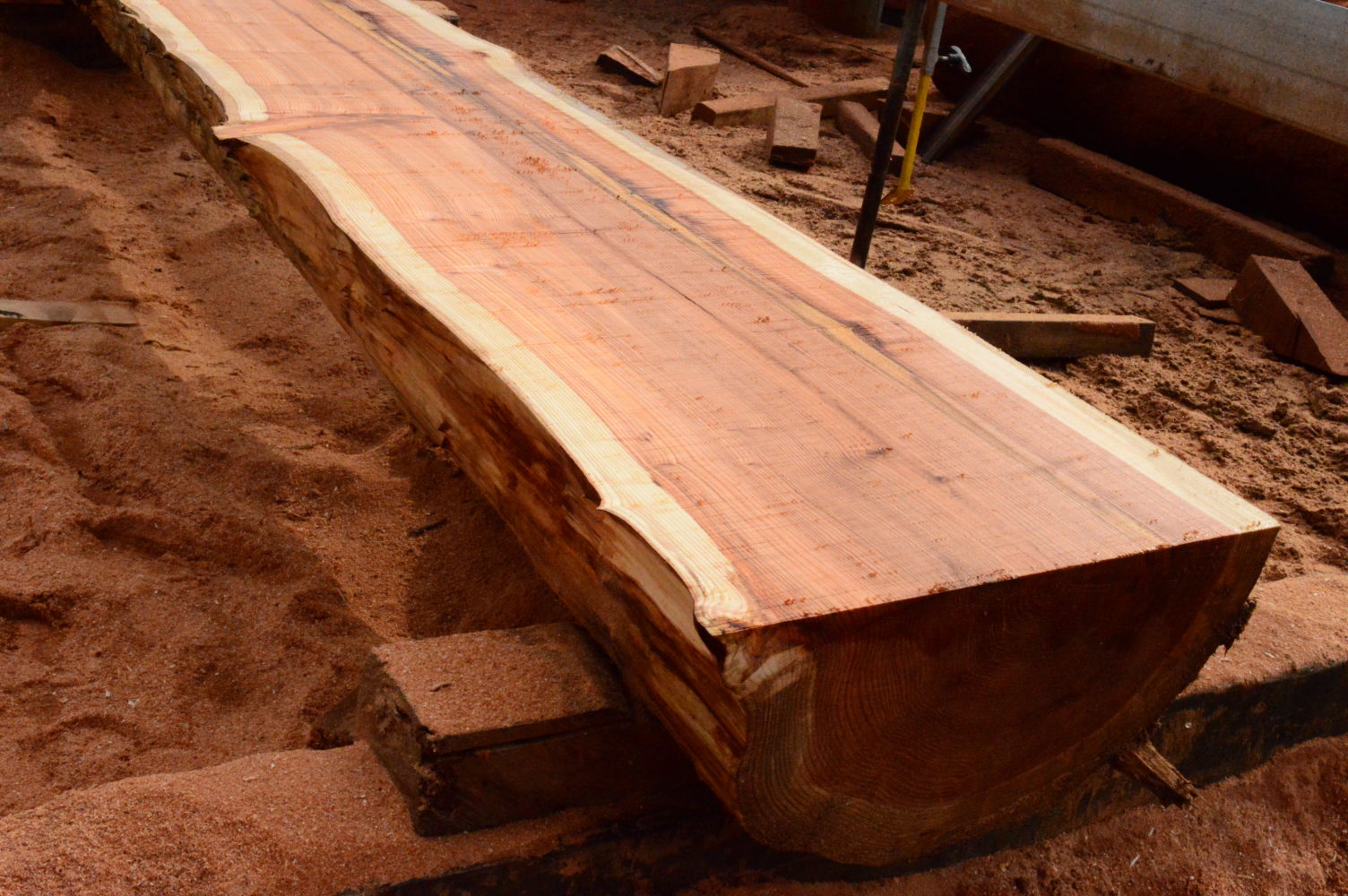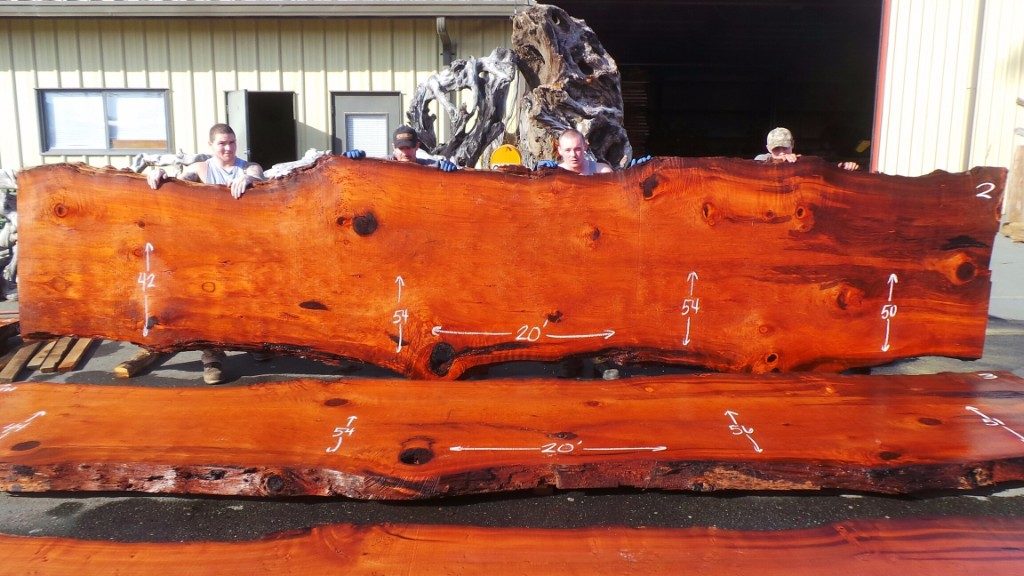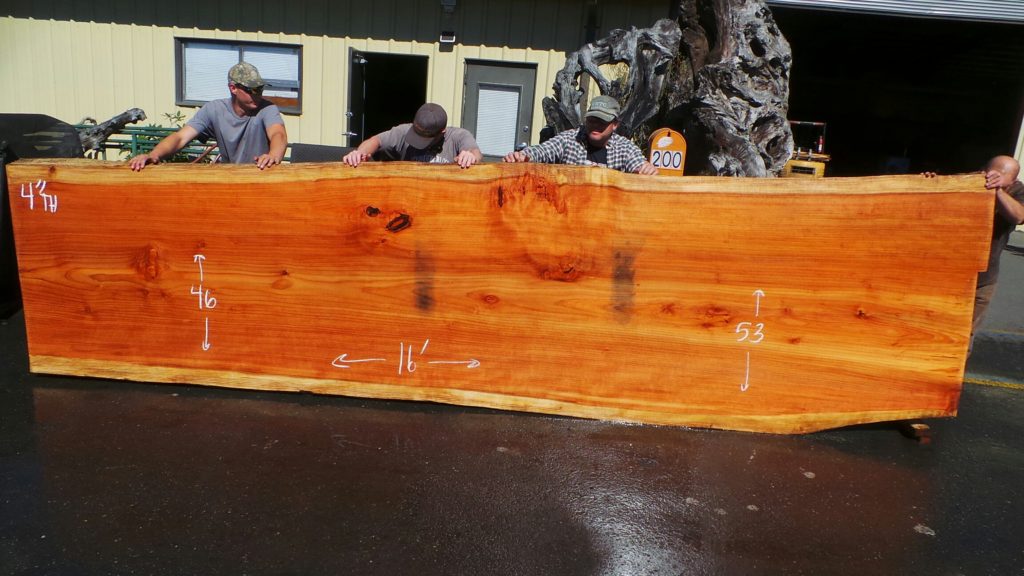
New Growth and Old Growth Redwood – What’s the Difference?
Old-growth and new growth are common terms you’ll hear in the redwood industry. Old-growth redwood is highly valued and well known for its beauty, durability, and resilience. But what exactly does it mean when we refer to a piece of redwood as old-growth?
Old Growth Redwood
Old-growth redwood comes from very old, very large trees that grew over centuries in relatively undisturbed forests. These trees grew slowly due to shade and competition from larger trees. As a result, they have tighter growth rings and denser wood. Today, old-growth redwood is scarce after extensive logging from the 1850’s up until the 1980s. Nonetheless, it remains highly sought after for both woodworking and construction projects. Woodworkers value old-growth wood not only for its beauty but also for its durability. Old-growth wood is stronger and more stable than new growth and is especially resistant to cracking and damage from rot or insects. There is also value in the rarity and history of old-growth redwood. Each piece is unique, and many come from trees with a lot of history.
This dining table slab is a great example of old-growth redwood. The characteristic color of the wood makes it popular for many home furnishings.
New Growth Redwood
New growth wood, on the other hand, comes from trees that grew very quickly after a disturbance (such as a logging operation or a natural occurrence) cleared the surrounding area. These forests grow rapidly, and so the wood has looser rings and can be much softer and lighter. You will often see wood referred to as second growth, third growth, or fourth growth. This refers to the number of generations that the forest has seen since it was initially logged. In general, the higher the number, the younger the wood.
New growth is often a more economical option than old growth. It is still a strong and durable wood, ideal for coffee tables and other home furnishings. Though it is not as rare as old-growth redwood, it is still highly sought after and can have beautiful color and character. Woodworkers often prefer it for projects where lighter-colored wood is ideal. The light bands of sapwood shown in the picture below are generally only present in new growth wood.
A beautiful new growth slab perfect for a dining or conference table. Note the distinct bands of sapwood on the edges of the slab.
How to Identify Redwood
The difference between old and new growth is a matter of debate, but most agree that in order to be considered old growth a redwood tree must be over 200 years old and have at least 8 grains per inch on a cross-section. The easiest and most accurate way to determine whether a redwood log is an old-growth is simply by counting the growth rings. There are some other indicators, though. The bark on old-growth trees is often much thicker, darker, and more highly textured than new growth bark. Old-growth redwood also tends to have much more depth and variation in grain pattern. Such variation can also occur in new growth wood but is usually not as intense. The presence of sapwood and the color of the wood also give a lot of information on the age of the wood. Experienced woodworkers will generally be able to identify a difference in texture between old growth and new growth.
Sourcing Old Growth Redwood
When purchasing or working with redwood, you should always consider the source of the wood. Since old-growth redwood is so scarce and so valuable, poaching is a significant problem in California’s national parks and forests. Many less reputable wood sources illegally harvest burl wood from living trees in protected areas. Such practices can cause permanent damage or kill the tree. In order to ensure that future generations will be able to enjoy the beauty and history of the redwood forests, we believe that ethical sourcing is of the utmost importance when working with redwood.
Here at Redwood Burl, we offer a wide variety of both old growth and new growth pieces for all your home improvement and woodworking projects. The choice between the two comes down to aesthetic preferences and the specific needs of the project. You can browse our selection of burl slabs, redwood dining tables, rustic fireplace mantels, redwood table bases, and more on our website. All of our pieces are ethically sourced, meaning that we salvage wood from stumps and logs that were cut decades ago and do not cut down any living trees. If you don’t see what you’re looking for here, you can contact us – we have a wide unlisted inventory that we can look through to help you find the perfect piece for your project.


